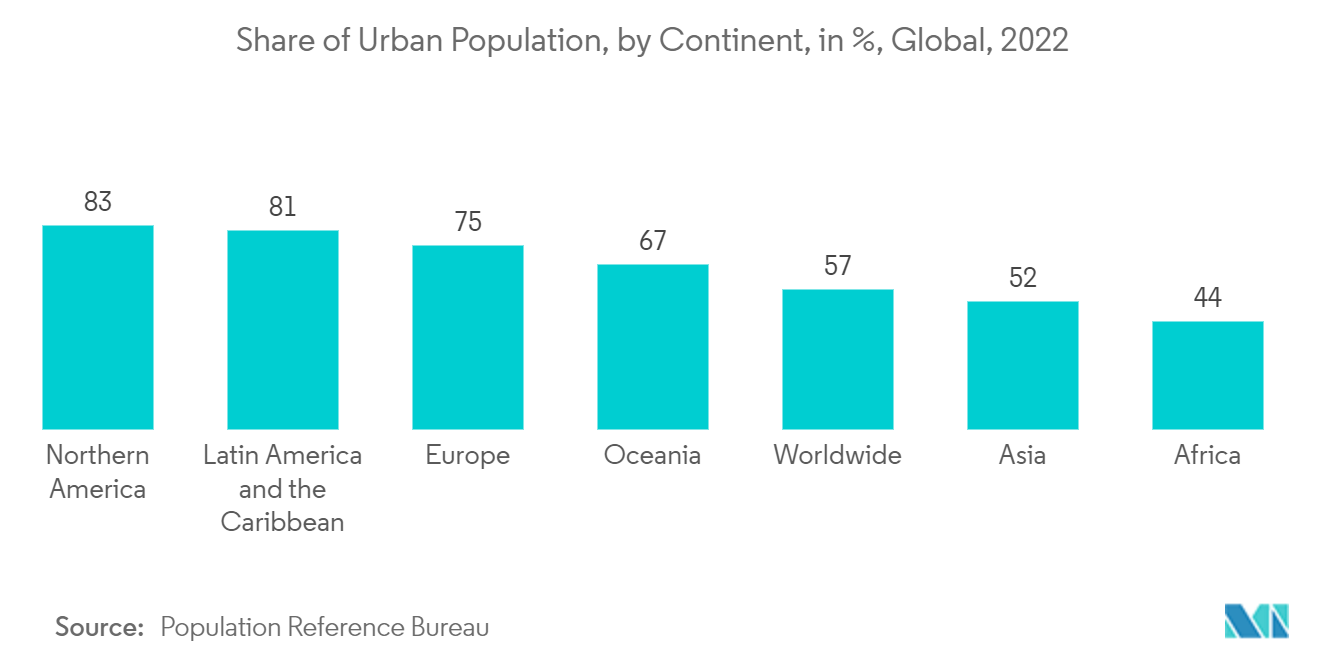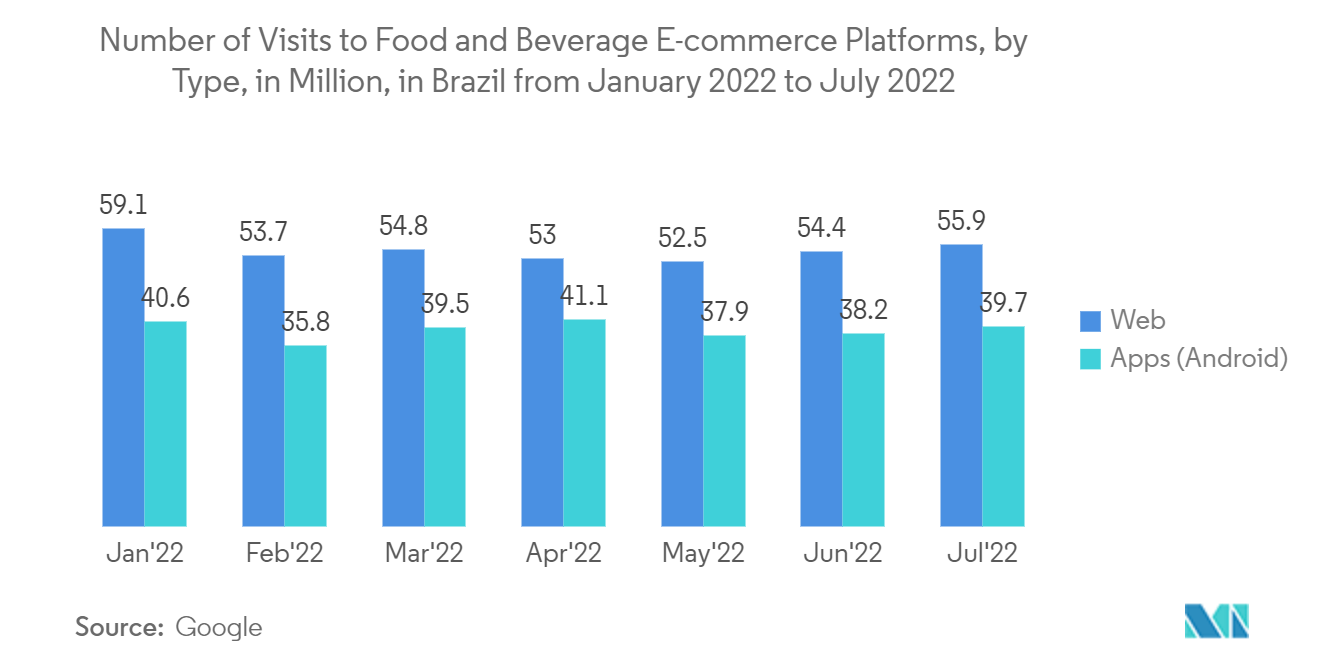Market Trends of Latin America Online Grocery Delivery Industry
This section covers the major market trends shaping the Latin America Online Grocery Delivery Market according to our research experts:
Increase in Urbanization is Expected to Drive the Market
- According to the Population Reference Bureau, Latin America's urbanization rate has reached 81% in the last year. Furthermore, according to the World Bank, metropolitan areas and cities would house approximately 81 percent of Latin America's and the Caribbean's total population in 2021. The vast majority of people living in cities would allow the studied market to expand.
- According to the IMF, the region's economy grew by about 4% last year, there were a lot more jobs, and the service sector got back on its feet after the pandemic.Inflationary pressures are easing in many nations due to central banks' early and aggressive efforts and decreasing global food and energy costs. However, core inflation (excluding food and energy) remains high in Brazil, Mexico, and Chile, hovering around 8%. With this kind of slow growth in jobs, people are likely to spend more, which would drive the market.
- Rural urbanization has increased in recent years. Agriculture, traditional local services, and small-scale manufacturing are being phased out in favor of modern industry. According to urban ecology research, larger cities provide more specialized goods and services to the local market and surrounding areas, serve as transportation and wholesale hubs for smaller places, accumulate more capital, provide financial service provision and an educated labor force, and frequently concentrate administrative functions for the area in which they are located.
- Commerce and trade are essential factors in urbanization. The contemporary era's distribution of goods and services and commercial transactions have resulted in the development of modern marketing organizations and exchange methods, which have greatly accelerated the construction of towns and cities. Commercialization and commerce are associated with the prevalent notion that towns and cities provide better commercial opportunities and returns than rural places.
- There are various social advantages to living in cities and towns. There are examples of better educational facilities, higher living standards, improved sanitation and housing, improved health care, improved recreation facilities, and improved social life. As a result, more individuals are being compelled to migrate to cities and towns to access a wide range of social benefits and services unavailable in rural areas.

Brazil is Expected to Hold Major share
- According to Google Trends, Brazil's food and beverage e-commerce platforms receive over 90 million visits per month. In July last year, food and drink shopping websites received 95.6 million visitors, with Android applications accounting for more than half (55.9 million). November and December saw the most robust online demand for online food businesses.
- Furthermore, many restaurants provide discounts to customers who order groceries through mobile applications. The increasing number of restaurants attempting to enhance foot traffic by developing their online presence through websites can be related to the expansion of the desktop sector. The development of the e-commerce industry promotes the adoption of websites and desktop channels for online meal ordering. Furthermore, incorporating AI and VR into desktops and laptops will drive the segment's growth.
- While third-party delivery alternatives are expanding, so is the number of restaurants and grocery shops abandoning third-party food delivery service providers in favor of developing their own in-house grocery delivery management platforms. The primary motivation for doing so is to reclaim control over grocery distribution. Grocers recognize that delivery is an essential element of the consumer experience. A poor delivery-even if caused by a third-party source-will always be put on the grocer. As a result, bringing operations in-house makes sense to assure consistency and quality throughout the client journey.
- Online grocery retailers today recognize the necessity of using customer data to enhance efficiency, save costs, and, most significantly, improve the customer experience as digitization enables assessing delivery success and its correlation to increased profits. With third parties handling such a significant portion of the delivery flow, it's no surprise that grocery providers are turning to data collection and analysis to understand their delivery operations better. Using data could give players in the Brazil area a chance to get a bigger share of the market.
The rise in investments in cloud kitchens and dark kitchens is expected to drive the study market. For example, in Latin America, investors are looking for dark kitchens. Mimic, a Brazilian business, can attest to this after receiving USD 9 million in a seed round. Monashees led the investment, with Canary and Valor Capital Group also contributing. Individual investors with extensive experience running their own enterprises in Brazil also joined them.


